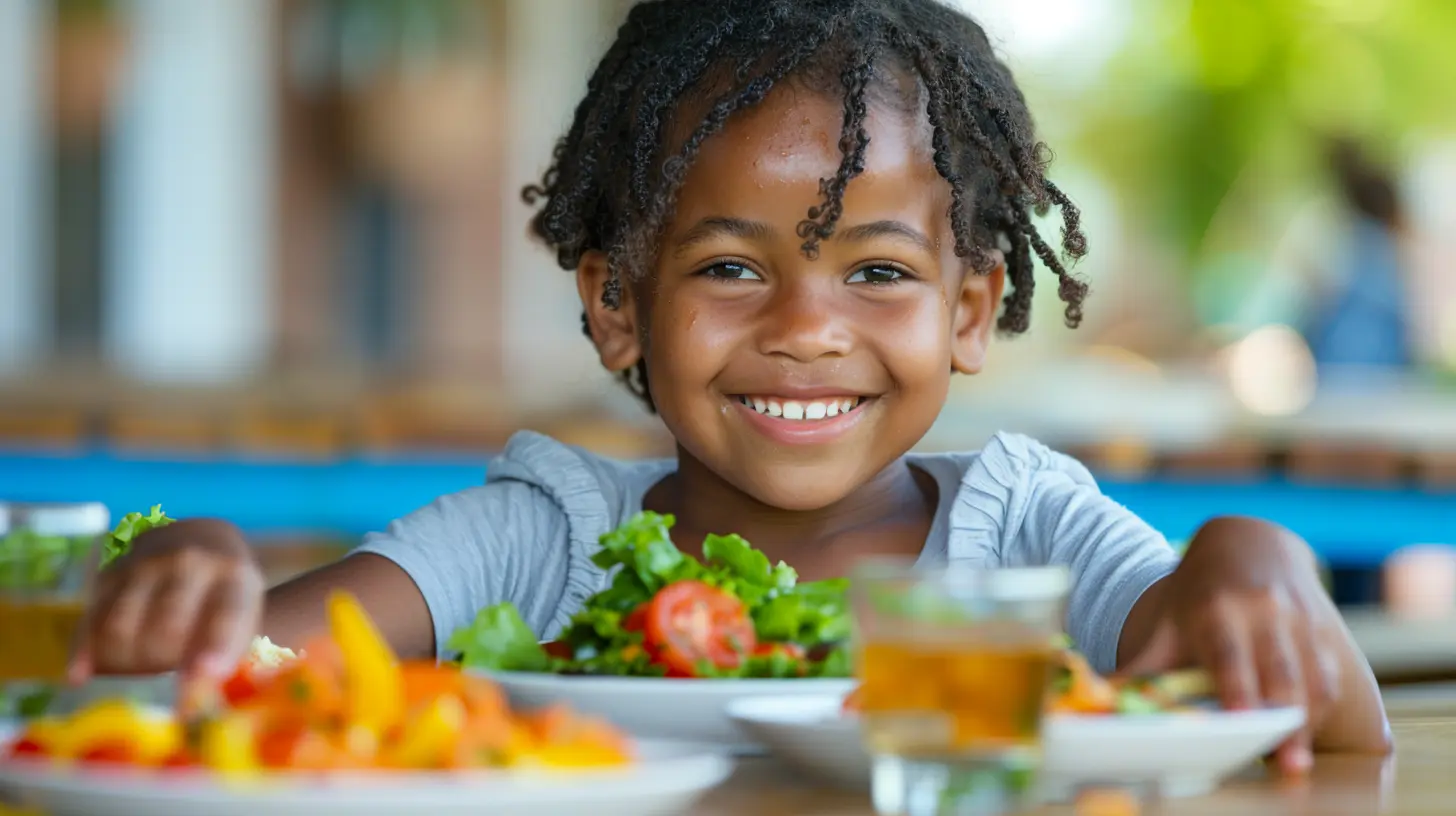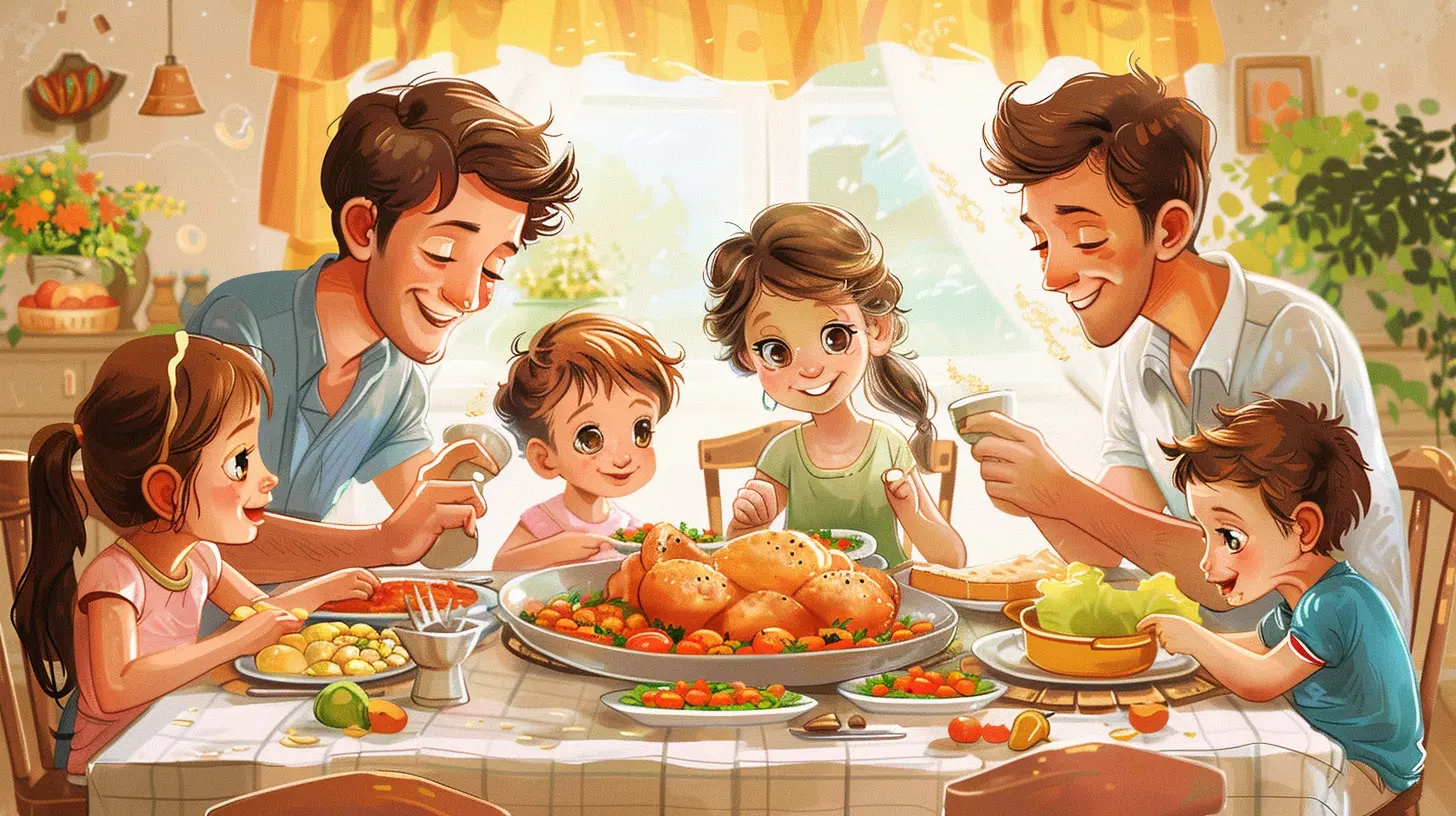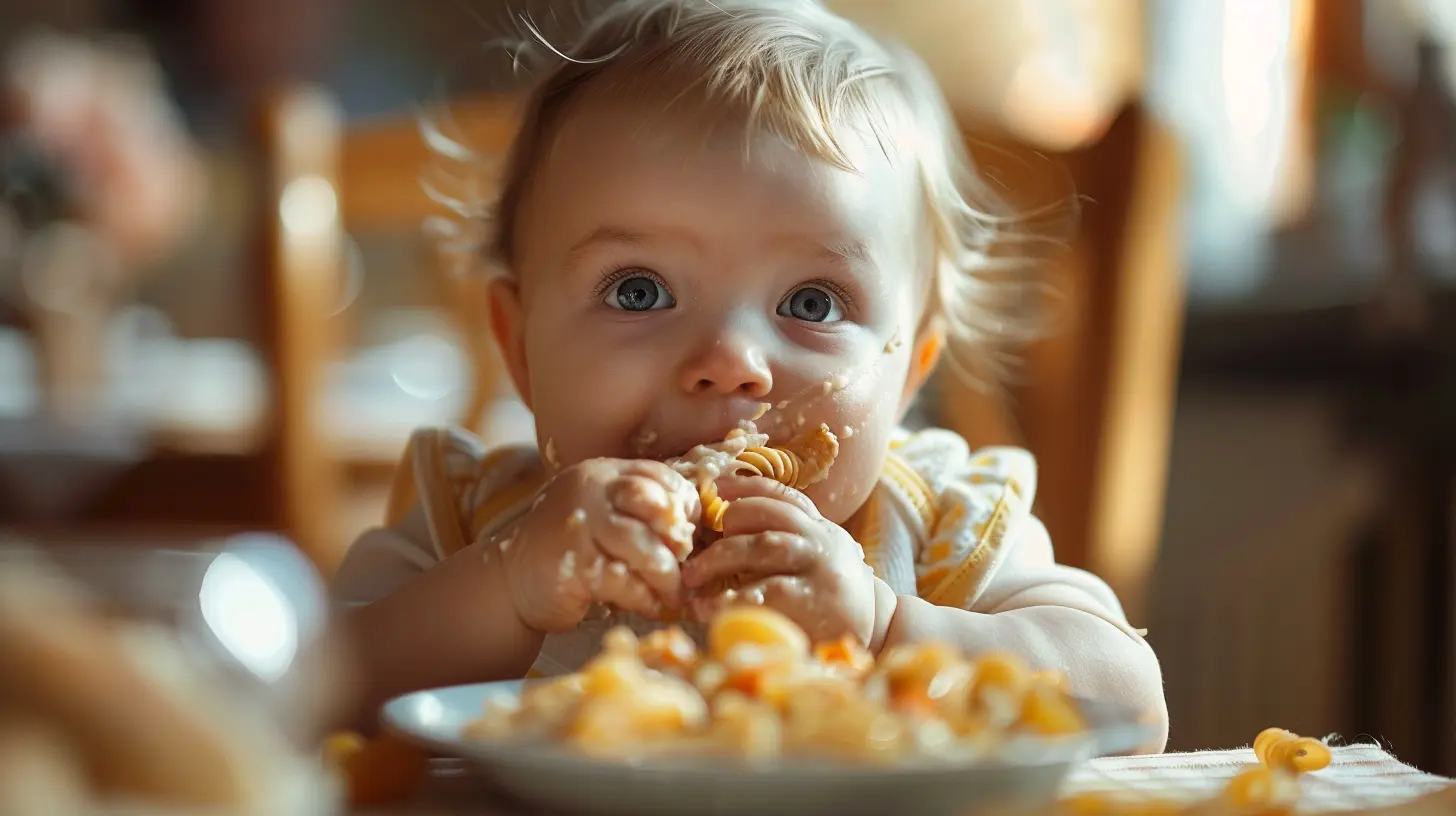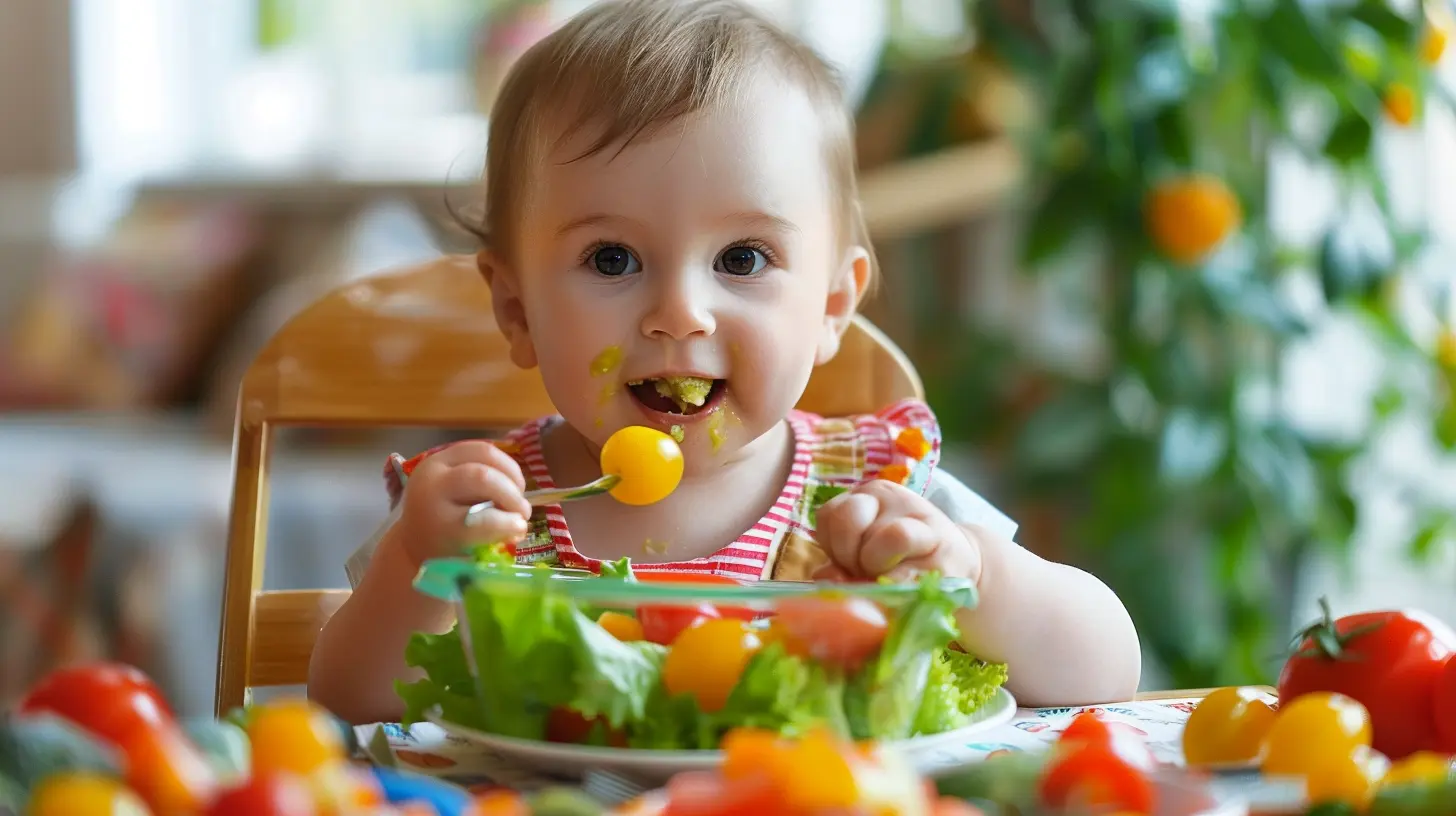The Power of Family Meals: How Eating Together Can Boost Health
18 July 2025
Ah, the family dinner table — a place where spaghetti meets storytelling, and peas (usually) meet resistance.
In a world where we’re racing from school pickups to soccer games, from emails to never-ending laundry piles, hitting pause for a shared meal can feel as rare as a unicorn doing your taxes. But guess what? Sitting down and eating together as a family isn’t just good — it’s kind of magical. Like, sprinkle-some-glitter-on-your-health magical.
So pull up a chair (maybe even one not covered in yesterday's cereal?), and let’s chew over why family meals are more powerful than you might think.
Why We Stopped Eating Together (And Why That’s a Bummer)
Life these days moves faster than a toddler who just found the candy drawer. Between work schedules, after-school activities, and the modern obsession with screens (we’re looking at you, TikTok), family dinners have quietly slipped off the menu.But here’s the kicker — when families eat together, incredible things happen. And not just in the “I finally tried quinoa” kind of way. We’re talking better health, stronger relationships, and yes — even fewer teen tantrums (hallelujah).
The Dinner Table: Your Secret Wellness Weapon
Let’s break it down. Family meals do more than fill bellies — they nourish the brain, the heart, and even your stress levels. Here’s how:1. Bye-Bye Junk Food, Hello Veggies
When families eat together, especially when meals are homemade-ish (boxed mac and cheese counts in my book), kids tend to eat more fruits, veggies, and whole foods. You know — the rainbow-y kind of things that don’t come with a toy in the box.In fact, studies show that children who regularly eat with their families are more likely to make healthier food choices overall. That’s right — your nightly “two more bites of broccoli” campaign is actually working, even if it doesn’t feel like it.
2. Mental Health Gets a Boost
Family meals don’t just feed the stomach — they feed the soul. Sitting down together gives everyone a chance to decompress, laugh, complain about math homework, and connect.Research has linked regular family meals to lower levels of depression, anxiety, and even substance abuse in teens. Who knew mashed potatoes were mood stabilizers?
3. Academic Smarts on the Side
You might not be tutoring algebra over dinner, but simply chatting around the table helps kids with language development and vocabulary. Kids who eat with their families tend to do better in school. It’s like a stealth homework hack — without the tears.4. Good Habits That Last a Lifetime
Remember when your grandma insisted on everyone eating together? She was onto something. The habits kids pick up around the dinner table — like portion control, mindful eating, and not texting and chewing — tend to stick with them for life.Not to mention, establishing family meals creates predictable routines, and kids love routines. (Okay, they love routines they think they made up, but still.)
But Wait, I’m Not Martha Stewart…
Hey, neither am I. And honestly, nobody needs a three-course meal with fresh parsley garnish to make a family dinner count. If you're worried that mealtime has to look like a Pinterest board exploded on your dining table — don't be.Here’s the golden rule: It’s less about what’s on the table and more about who’s around it.
Whether you’re serving gourmet coq au vin or grilled cheese with a side of ketchup, what matters most is the connection.
Real Talk: The Challenges of Family Meals
Alright, let’s be honest. Family meals are great in theory, but sometimes they’re more sitcom than serene. You’ve got:- A toddler launching peas like missiles
- A teen muttering about “cringe conversations”
- A dog under the table playing clean-up crew
- And you? You're just trying to remember what day it is
But the chaos is part of the charm. Listen, your dinner doesn’t need to look like a Hallmark moment. If everyone’s sitting down (okay, mostly sitting down...), you’re already winning.
Tips To Make Family Meals Actually Happen (Without Losing Your Mind)
Your family doesn’t need to eat together every single day — you're not running a 1950s sitcom. Start small and aim for progress, not perfection.1. Pick a Few Nights a Week
Start with two or three dinners a week. Mark them on the calendar, call them “Taco Tuesdays” or “Pizza Pajama Night.” Make ‘em special.2. Unplug at the Table
That means phones, tablets, and yes — even Alexa (sorry, girl). Make dinner a screen-free zone. You’ll be amazed how much more your kids have to say when they’re not hypnotized by cat videos.3. Get Everyone Involved
Even the tiniest hands can help. Let kids sprinkle cheese, stir sauce, or suggest the menu (within reason, we're not having chocolate chip noodles). When kids help make the meal, they’re more likely to eat it — and beam with pride.4. Keep It Simple
Seriously. Dinner doesn’t need to be fancy. A rotisserie chicken, a salad, and some rolls totally count. Breakfast for dinner? Genius. Leftovers night? Go for it. Think less "5-star chef" and more "survivor of Tuesday."Conversation Starters That Go Beyond “How Was Your Day?”
We’ve all been there. You’re ready for some deep family bonding, and all you get is...“Fine.”
Pro tip? Toss out the boring questions and go for ones that spark actual (and often hilarious) conversations. Try:
- “If your pet could talk, what would they say about our family?”
- “What’s the weirdest thing you ate today?”
- “Would you rather fight one horse-sized duck or 100 duck-sized horses?”
- “Which superhero would be the WORST dinner guest?”
Conversation is the secret sauce of family meals. Laughing together lowers stress, builds trust, and yes — makes the peas go down easier.
The Long-Term Payoff: A Lifetime of Togetherness
Here’s the real kicker – family meals aren’t just about today. They’re a long-term investment in your relationships. Your kids may not remember the lasagna or the green beans, but they will remember the feeling of being heard, being loved, and being part of a team.Plus, when they’re older and facing the stress of adulthood (bills, deadlines, the horror of assembling IKEA furniture), they’ll carry the tradition forward with their own families. That’s the ripple effect of one shared meal.
When It Doesn’t Go Perfectly (Because It Won’t)
Let’s be real here: not every family meal is a success. Sometimes someone storms off. Sometimes the food burns. Sometimes you look up and realize everyone’s talking over each other like you're hosting Thanksgiving with 12 toddlers.That’s okay.
Family meals are messy, loud, imperfect — and that’s exactly what makes them beautiful.
It’s not about perfection. It’s about showing up, sharing, laughing, and connecting. Even if the mashed potatoes are cold.
Bonus: You Save Money. Like, A Lot.
Let’s not forget — eating in is way cheaper than feeding a small army at a restaurant. Even if you spring for the fancy butter (you know, the kind that isn’t in a tub), you’re still saving big. That’s more money for vacations, college, or finally replacing that chair your toddler Picasso’d with Sharpie.So, What’s For Dinner Tonight?
Need some easy meal ideas to get started? Here’s a few crowd-pleasers that won’t have you cooking for hours:- Taco Bar – Everyone assembles their own tacos. Messy fun = bonding.
- Pasta Night – Add garlic bread and suddenly you're a hero.
- Breakfast for Dinner – Pancakes + bacon = Never fails.
- DIY Pizzas – Let kids top their own. One ends up with 47 olives? That’s the creative spirit!
- Slow Cooker Magic – Throw it in at noon, come back to dinner like you have your life together.
Final Thoughts: Pass the Bread, Please
The power of family meals lies in their simplicity. It’s not about what brand of pasta you use or whether the chicken is organic. It’s about being there. It's about eye contact, belly laughs, and shared time in this wild rollercoaster we call parenting.So whatever you're eating tonight, just sit down, invite the chaos, and savor the moments — even if the only thing your kid eats is the dinner roll.
Bon appétit, fellow warriors of the family table. You’ve got this.
all images in this post were generated using AI tools
Category:
Childrens HealthAuthor:

Kelly Snow
Discussion
rate this article
1 comments
Lena McElveen
Family meals strengthen bonds and promote healthy habits.
July 26, 2025 at 3:07 AM

Kelly Snow
Absolutely! Family meals create lasting connections and encourage nutritious eating, benefiting both physical and emotional well-being.


